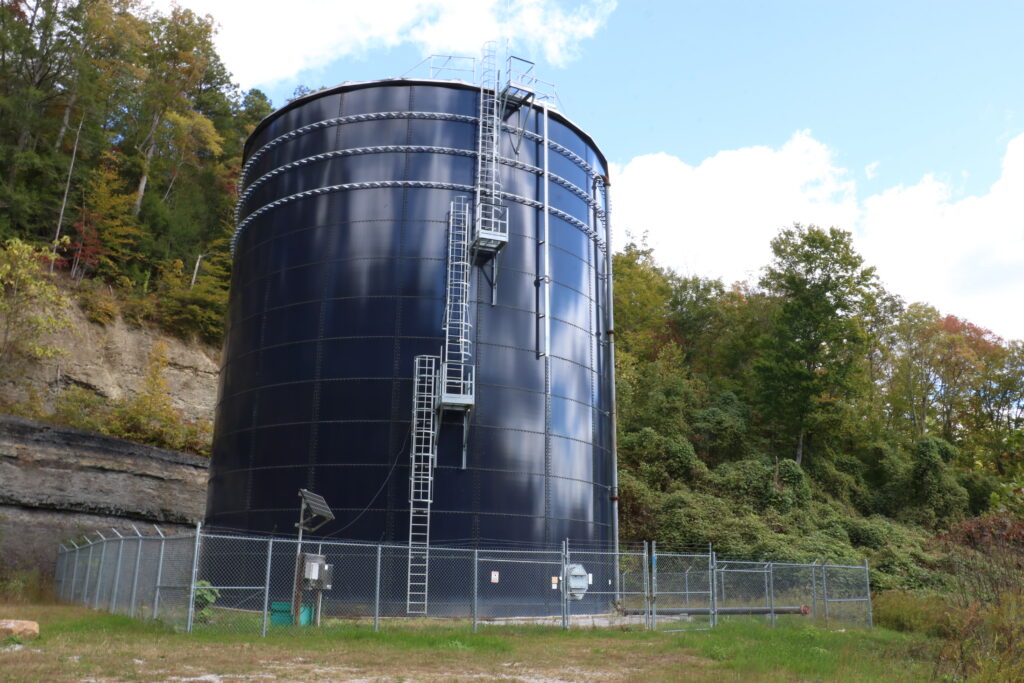The water supply issues in Kentucky, particularly in regions like the Hyden-Leslie County Water District, highlight a significant infrastructural crisis, particularly for facilities built atop unstable land, such as former coal mines. The precarious nature of these locations raises concerns regarding their operational stability. In an unrelated incident, Alice Lloyd College in Knott County experienced a major setback when their wastewater treatment plant was heavily damaged during the 2022 flooding. The facility, which dates back to the 1960s, has faced numerous challenges, leading local officials to voice concerns about its longevity and capacity to handle future sewage demands. The executive director of the Knott County Water and Sewer District, Jared Salmons, underscored the prevailing sense of urgency while expressing his apprehensions over the plant’s viability, emphasizing the reliance on temporary fixes rather than permanent solutions.
In response to the pressing issues faced by water and sewer systems, Kentucky has initiated the Kentucky Water and Wastewater Assistance for Troubled or Economically Restrained Systems Fund (WWATERS). Established to address the widespread infrastructural decay, this initiative has amassed a total of $150 million in funding, yet applications for aid far exceed the available resources, totaling more than $657 million in requests. These applications shed light on the deteriorating conditions of water utilities across the state, revealing inadequate wastewater treatment systems, unreliable water sources, and a growing number of small, unincorporated districts struggling to meet the needs of vulnerable populations. The dire situation hinders economic growth in rural areas, a concern echoed by Jennifer McIntosh of the Kentucky River Area Development District, who sees a link between infrastructure inadequacies and high poverty rates in Eastern Kentucky.
The WWATERS program aims to not only upgrade aging infrastructure but also alleviate financial strains through debt assistance and mandatory financial audits for the struggling utilities. However, competition for funding is fierce, with larger cities like Louisville also vying for support, further complicating the funding process for smaller districts like Knott County. The Kentucky Infrastructure Authority traditionally decided the allocation of funds, yet the new legislation allows lawmakers to review and choose which projects receive funding, incorporating factors such as utility debt levels and the income of their customer bases. This marks a shift in the decision-making process, emphasizing the critical need for reforms.
Widespread infrastructure failures were evident in the applications submitted for WWATERS funding, exposing the magnitude of neglect and the precarious conditions of many facilities. For instance, the Martin County Sanitation District reported constant sewage overflows due to an inoperative wastewater lift station, raising public health alarms. Similarly, utilities from different counties outlined urgent requests for funding to enhance their systems, emphasizing the dire circumstances that necessitated immediate remediation. In one instance, a water district sought to relocate its tank after discovering it was built atop unstable land, indicating how long-standing oversights in infrastructure planning have led to heightened vulnerabilities.
As local communities strive to resolve pressing infrastructure issues, many utilities are also weighed down by financial mismanagement and legal challenges. The city of Livingston sought funding assistance to conduct overdue financial audits and alleviate debt burdens, a situation that had even led to water service cutoffs. Mismanagement has become somewhat routine, prompting scrutiny from state regulators and creating a cycle of failure that burdens those attempting to manage and sustain these vital services. Most small utilities lack the capacity to operate effectively due to a lack of resources, further complicating their efforts to rectify underlying issues that have accumulated over decades.
The financial and infrastructural challenges confronting Kentucky water utilities underscore a broader systemic problem, particularly in smaller communities where local councils may avoid raising rates due to the political ramifications. An analysis conducted by the Kentucky Public Service Commission noted that political pressures often inhibit the necessary rate hikes needed for infrastructure sustainability, thereby establishing a pressing need for programs like WWATERS. While there are serious obstacles to overcome, many local officials and utility leaders emphasize the necessity of these supporting funds as a potential lifeline, aiding in their efforts to modernize aging infrastructures while sustaining essential water and sewer services in their communities. As documented challenges continue to mount, the experiences of utilities like the McKinney Water District illustrate the existential threat posed by deteriorating infrastructure, highlighting the importance of urgent state intervention.

